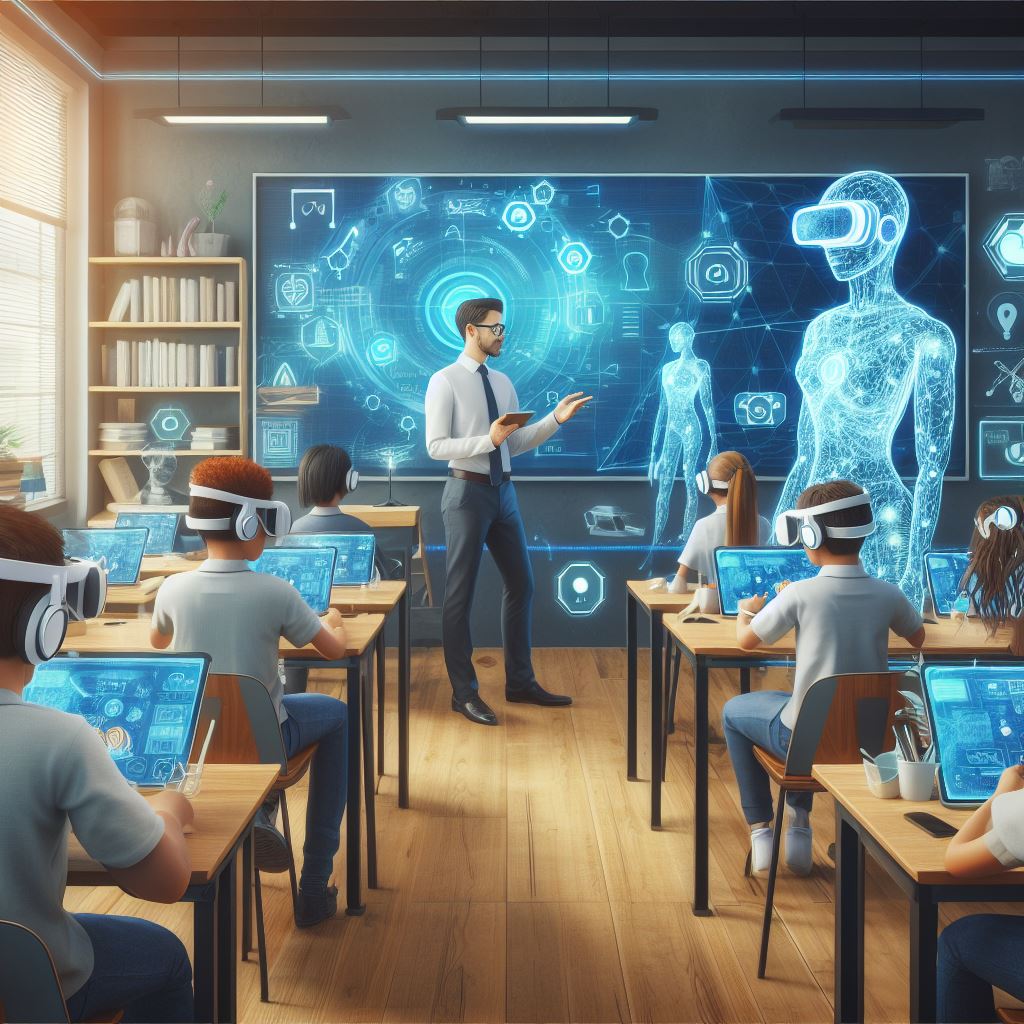
Tomorrow's Classrooms: Envisioning the Intersection of Artificial Intelligence and Human Teaching
In an era where technology dominates almost every aspect of our lives, education is no exception. As we stand on the brink of an educational revolution, the integration of artificial intelligence (AI) in education - or "EdTech" as it's commonly termed - offers unprecedented opportunities for enhancing human teaching methods. But with these possibilities come a range of considerations, particularly from an ethical standpoint.
AI Technologies and Education
Existing and Emerging AI Tools
- Intelligent Tutoring Systems: These are AI-driven platforms that provide personalized learning experiences for students, adapting in real-time to their needs.
- Automated Teaching Aids: Tools that assist educators in creating lesson plans, grading assignments, or monitoring student progress.
- Machine Learning in Education: Algorithms that analyze student data to predict learning outcomes, identify struggling students, and offer tailored interventions.
According to Luckin et al. (2016), there's a compelling argument for the use of AI in education. They posit that AI can support personalized learning, making education more accessible and tailored to individual student needs.
Integrating AI in Future Classroom Settings
The future classroom is one where AI seamlessly blends with human teaching:
- Personalized Learning Paths: Using AI to understand each student's strengths, weaknesses, and learning styles, and tailoring lessons accordingly.
- Real-time Feedback: AI tools providing instant feedback, allowing educators to intervene promptly when students struggle.
- Engaging Content: AI-driven platforms can generate content that is interactive and suited to the modern-day student's tech-savvy nature.
Impact on Teaching
Teaching Methodologies
The emergence of AI in education profoundly impacts teaching methodologies:
- Flipped Classrooms: With AI handling basic instruction, educators can focus on more complex, interactive tasks during classroom time.
- Data-Driven Decisions: AI provides valuable insights into student performance, enabling educators to adjust their teaching strategies.
Curriculum Development
- Adaptive Curriculums: AI can dynamically adjust course content based on student performance.
- Inclusion of AI Topics: Preparing students for a future dominated by AI means incorporating AI-related subjects into the curriculum.
Student Engagement
As highlighted by Woolf (2010), AI can revolutionize e-learning, making it more interactive and engaging, thus increasing student motivation and participation.
Ethical Considerations in AI-Empowered Classrooms
Bias in AI
AI models are only as good as the data they're trained on. If this data is biased, the AI's decisions and recommendations will be too. It's imperative to ensure that AI tools used in education are trained on diverse and representative datasets.
Privacy Issues
- Protecting student data from misuse.
- Ensuring transparency about how student data is used.
Accessibility and Equality
- Ensuring that AI-driven tools are accessible to all students, regardless of their socioeconomic status or geographical location.
- Providing teachers with adequate training to use these tools effectively.
VanLehn (2011) emphasized the effectiveness of both human tutors and intelligent tutoring systems. The challenge lies in balancing the two to ensure equal access and quality of education for all.
Case Studies: AI in Real-world Classrooms
Case Study 1: AI-Powered Homework Assistants
In several schools, AI-powered platforms help students with homework. These tools identify areas where students struggle and provide targeted assistance, leading to improved performance.
Case Study 2: AI in Special Needs Education
AI-driven tools have been invaluable in supporting students with special needs, offering personalized learning experiences and making education more inclusive.
These case studies underscore the benefits of integrating AI into classrooms while also highlighting the challenges and ethical considerations involved.
Future Prospects
The integration of AI and human teaching is in its nascent stages. As AI technology evolves, its integration into classrooms will become more seamless. Potential future developments include:
- AI Teaching Assistants: Bots that assist educators in administrative tasks and student interactions.
- Augmented Reality (AR) and Virtual Reality (VR) in Classrooms: Offering immersive learning experiences.
- Ethical Frameworks: As AI becomes more entrenched in education, there will be a greater push towards establishing ethical guidelines and best practices.
Conclusion
The future of education is undeniably intertwined with AI. As educators, EdTech professionals, policymakers, and researchers, we must navigate this new terrain with care, ensuring that we harness the power of AI without compromising on ethical considerations. The synergy between AI and human teaching has the potential to redefine education, making it more personalized, inclusive, and effective. As we venture into this new era, our focus must remain on providing an enriching and equitable learning experience for all students.
Technology Education Online Learning Future Education




